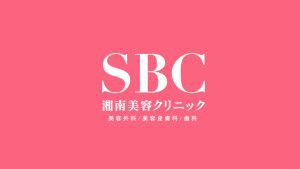What is a Direct Listing?
A Direct Listing is a method, like an Initial Public Offering (IPO), for a company to list its shares on a stock exchange. While many companies choose an IPO—which involves issuing new shares to the public to raise capital—some companies opt for a Direct Listing, where only existing, previously issued shares are sold, and no new shares are issued.
In the United States, Direct Listings have occurred occasionally on Nasdaq in the past, but they were typically utilized only by smaller companies. This method first gained significant attention in April 2018, when Spotify conducted a Direct Listing on the NYSE. Spotify was a massive “decacorn” with a market capitalization approaching 3 trillion JPY (approx. $30B). It was an unprecedented event for a company of such scale to choose a Direct Listing. Furthermore, in June 2019, Slack also conducted a Direct Listing on the NYSE. Slack’s market capitalization reached 2 trillion JPY (approx. $20B), and the fact that another famous unicorn chose a Direct Listing in succession was remarkable.
Unlike an IPO, a Direct Listing does not allow a company to raise capital by issuing new shares and selling them through underwriting securities firms (underwriters). In a Direct Listing, only existing shares held by founders, VCs, employees, and other early investors are eligible for trading.
Since no new shares are issued, this method is not executed for corporate fundraising but purely to provide an exit for existing investors. Therefore, it is an option available only to companies that have no immediate need for capital. Indeed, Spotify had already raised $2.7 billion (approx. 300 billion JPY) through private placements before its listing, and Slack had reportedly raised $1.2 billion (approx. 140 billion JPY). Both companies had already met their funding needs for business continuity and expansion prior to listing. It is believed they pursued a Direct Listing primarily for the benefit of their early investors.
Additionally, Direct Listings, unlike IPOs, do not involve lock-up agreements. This, combined with the fact that no new shares are issued (thus no dilution of existing shareholders’ equity), means that from the perspective of an exit for existing shareholders, a Direct Listing may be superior.
NYSE Files to Allow Capital Raising in Direct Listings
On November 26, 2019, the NYSE filed a proposed rule change with the SEC that would permit companies to raise capital at the time of a Direct Listing.
The content of the NYSE’s proposed rule change filing can be viewed here: (https://www.nyse.com/publicdocs/nyse/markets/nyse/rule-filings/filings/2019/SR-NYSE-2019-67.pdf)
If this rule change is approved, it will enable companies to sell newly issued shares and raise capital at the time of listing, whereas previously, Direct Listings were limited to existing shares. The NYSE’s proposal is designed to allow a company to raise capital by conducting an opening auction at the time of listing, conditioned on the company selling at least $250 million in new shares.
Traditionally, capital raising at the time of listing was limited to IPOs. In an IPO, underwriters support the company’s offering by acting as coordinators of supply, demand, and price. In return, they typically receive a fee (the underwriter’s discount) of 4-7% of the funds raised. If raising capital via a Direct Listing becomes possible, companies could save on these substantial fees, although forecasting demand and price would be more difficult.
More importantly, the success of an IPO is highly dependent on the underwriters. This new method may hold the potential to give companies more control over the timing of their listing.
It is not clear at this time whether Nasdaq will introduce a similar system. However, if the NYSE’s rule change is approved by the SEC, it is likely that Nasdaq will adopt a similar framework sooner or later.
Incidentally, in Japan, this method was used only once, by Kyorin Pharmaceutical in 1999, and there have been no subsequent examples. In the case of the Mothers market, a Direct Listing is impossible due to listing criteria requiring a public offering of at least 500 units. However, the main markets (TSE 1st and 2nd Sections) do not have a similar provision, so it is theoretically still possible to conduct a Direct Listing in Japan (though raising capital through it is not).
For questions or consultations regarding this page, please feel free to contact us using the inquiry form below.










